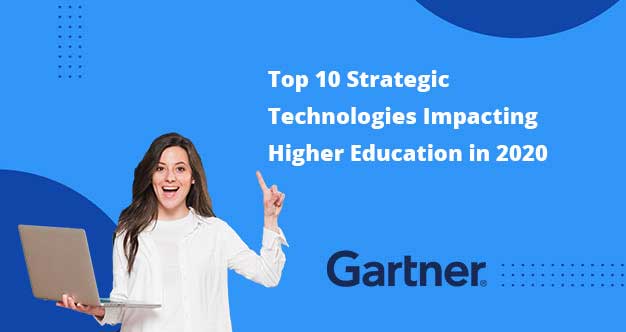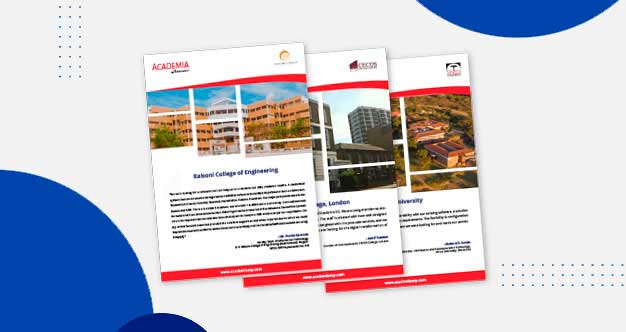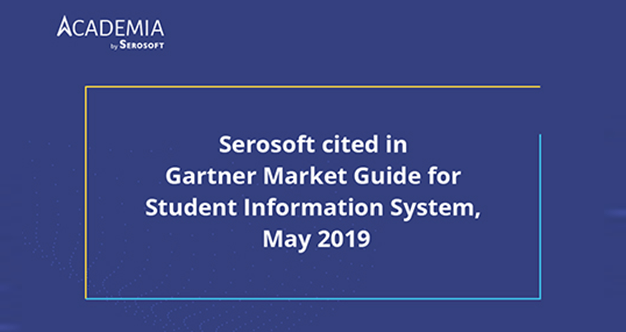Student Information System (SIS) – Streamline Your Higher Education Experience
Technology has become an integral part of our daily lives, this is especially true in the education sector, where education institutions are constantly looking for ways to improve their processes and provide a better experience for their students. One such technology that has gained popularity in recent years is the use of education ERP / Student Information Systems (SIS) in higher education. In this article, we will explore the benefits of using ERP/SIS systems in higher education and how they can streamline the overall experience for students, faculty, and staff. We will delve into the specifics of what ERP systems are, their benefits, popular ERP systems in the market, and the challenges faced during their implementation.
The education sector has always been a fertile ground for technological advancements. From the introduction of smart classrooms to the use of artificial intelligence in learning, technology has revolutionized the way education is delivered. ERP systems are the latest addition to this technological revolution in education. They have the potential to transform the administrative and academic processes in higher education institutions, making them more efficient and effective.
What are Higher Education ERP / SIS Systems?
ERP stands for Enterprise Resource Planning, and it refers to a software system that integrates and manages various aspects of an organization’s operations. In the context of higher education, ERP systems are designed specifically for colleges and universities to manage their administrative, academic, and financial processes. These systems provide a centralized platform for managing student information, course registration, financial aid, human resources, and other campus management functions.
ERP systems in higher education are not just about managing administrative tasks. They are about creating a seamless and integrated experience for all stakeholders involved – students, faculty, staff, and management. They bring together all the disparate systems used in a university, from admission to graduation, under one umbrella. This not only simplifies the management of these systems but also ensures that all stakeholders have access to the same information, leading to better decision-making and improved outcomes.
Benefits of Higher Education ERP Systems
Streamlined Processes: One of the main benefits of using ERP systems in higher education is the streamlining of processes. With all the different departments and functions within a university, it can be challenging to keep track of everything and ensure smooth operations. ERP systems provide a centralized platform that connects all these departments and automates various processes, making it easier for staff to manage their tasks and for students to access the services they need.
Improved Communication and Collaboration: ERP systems also facilitate better communication and collaboration among different departments and stakeholders within a university. With all the information stored in one place, it becomes easier for staff to share data and work together on projects. This can lead to more efficient decision-making and a more cohesive campus community.
Enhanced Student Services For students: ERP systems can greatly improve their overall experience. With these systems, students can access all the services they need, such as course registration, financial aid, and academic records, in one place. This eliminates the need for them to visit different departments or stand in long lines, saving them time and frustration. Additionally, ERP systems can provide students with real-time updates on their academic progress, making it easier for them to stay on track and make informed decisions about their education.
Better Data Management: Data is a crucial aspect of any organization, and universities are no exception. With the large amount of data generated by various departments, it can be challenging to manage and make sense of it all. ERP systems provide a centralized database that stores all this data, making it easier for staff to access and analyze it. This can lead to better data-driven decision-making and improved efficiency in operations.
Cost Savings Implementing an Education ERP: System in higher education can also result in cost savings for the institution. By automating processes and reducing the need for manual labor, universities can save on staffing costs. Additionally, with better data management and decision-making, institutions can avoid costly mistakes and make more informed investments.
ERP systems also offer scalability, which is a significant advantage for growing institutions. As the institution expands, the ERP system can be scaled up to accommodate the increased workload without any significant disruptions. This ensures that the institution can continue to provide a high-quality education experience even as it grows.
Popular & Effective Higher Education ERP Systems
There are several ERP systems available in the market, each with its own set of features and benefits. One of the most popular ones used in higher education is Academia ERP. Academia ERP by Serosoft is a robust, feature-rich, AI-enabled, analytics-equipped, user-friendly Education Management System / Student Information System – built on a cutting-edge and flexible architecture – that is powering 350 institutions across 25 countries today.
The unique attributes of this award-winning product are:
- AI-ENABLED
AI-powered analytics that offers intelligent, data-driven insights across all departments, enhancing and driving operational efficiency.
- COMPREHENSIVE
Single-click Interface that provides an overview of all the departments and functions
- CONFIGURABLE
Highly dynamic, and configurable as per the needs of the institution
- CLOUD-ENABLED
Delivered on the cloud and accessible by clients anytime, anywhere
- MULTI-CENTER CAPABILITIES
Complete decision support system for the management with multiple report generation capability
- MOBILE APP
Academia is mobile-ready with Android and iOS apps for all the stakeholders
- UNIFIED
Integrated structure which reduces data redundancy, and ensures process standardization
Challenges of Implementing ERP Systems in Higher Education
While there are many benefits to using ERP systems in higher education, there are also some challenges that institutions may face during the implementation process. These include:
1. Cost
Implementing an ERP system can be a significant investment for universities, and it may not be feasible for smaller institutions with limited budgets. Additionally, there may be additional costs for training staff and maintaining the system, which can add to the overall cost.
The cost of implementing an ERP system can be a significant barrier for many institutions, especially smaller ones with limited resources. However, it is important to consider the long-term benefits of such a system. While the initial investment may be high, the cost savings and efficiency gains in the long run can make it a worthwhile investment.
2. Resistance to Change
Introducing a new system can be met with resistance from staff who are used to traditional methods of operation. This can lead to a slower adoption rate and may require additional training and support to ensure a smooth transition.
Change is often met with resistance, especially when it involves a significant shift in the way things are done. However, with proper communication and training, this resistance can be overcome. It is important to involve all stakeholders in the process and provide them with the necessary support to adapt to the new system.
3. Data Migration & Security
Migrating data from existing systems to the new ERP system can be a complex and time-consuming process. It requires careful planning and execution to ensure that all data is transferred accurately and securely.
Data migration is one of the most critical aspects of implementing an ERP system. It involves transferring large amounts of data from existing systems to new ones, which can be a complex and risky process. However, with careful planning and the use of appropriate tools and techniques, this process can be managed effectively, choosing software with global security complaint parameters will ensure security.
Conclusion
In conclusion, Education ERP/SIS systems have become an essential tool for higher education institutions looking to streamline their processes and provide a better experience for their students. These systems offer a wide range of benefits, including improved communication, enhanced student services, and better data management. While there may be some challenges in implementing these systems, the long-term benefits make it a worthwhile investment for universities. With the right ERP system in place, universities can improve their operations, save costs, and ultimately provide a better education experience for their students.
The future of higher education lies in leveraging technology to create a seamless and integrated experience for all stakeholders. Education ERP/SIS systems are a step in this direction, providing a platform that brings together all aspects of university operations under one umbrella. As more and more institutions adopt these systems, we can expect to see a significant transformation in the way higher education is delivered.
Related Posts:
 Higher Ed Plans
Higher Ed Plans K12 Plans
K12 Plans










